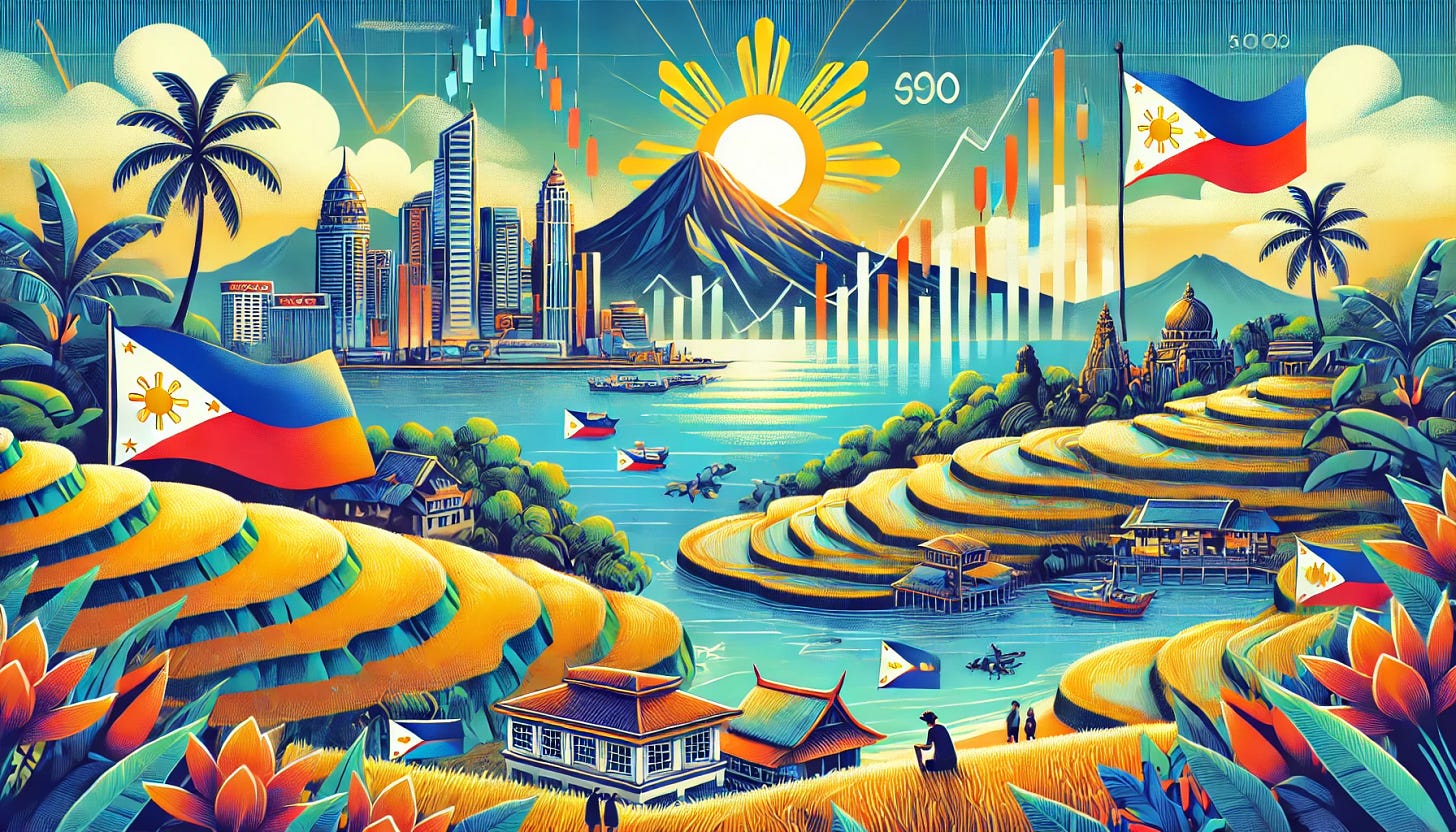A TRADERS' MONTH IN PHILIPPINES🇵🇭
Almost didn't make it out of this country, but well worth it.
Over the next 12 months I’ll be slow-travelling around the world with my family while working and trading. I’m very grateful that our ‘job’ gives many of us the opportunity to do this, so I thought it would be interesting to note down some thoughts along the way, which may hold some nuggets for other traders, or people considering to do something similar. As always, reach out if you’ve got any questions, or you can unsubscribe here.
My first impressions of Philippines was not a great one. Wandering the streets of Cebu City….like many Asian cities: poor, dirty, smelly and noisy. Reminded me of Thailand maybe 15 years ago.
“The Philippines, an archipelago of over 7,000 islands in Southeast Asia, is a vibrant tapestry of rich cultural heritage, stunning natural landscapes, and dynamic economic activity. Its history is a blend of indigenous traditions and nearly 400 years of Spanish rule, which have left a lasting legacy of beautiful baroque churches, historic fortresses, and colorful festivals. The walled city of Intramuros in Manila and the rice terraces of Banaue are iconic examples of this historical depth.
Natural beauty abounds, from the crystal-clear waters and white sands of Boracay and Palawan to the majestic peaks of Mount Apo and Mayon Volcano. The country is renowned for its biodiversity, with marine sanctuaries like Tubbataha Reefs attracting divers from around the world. Manila, the bustling capital, is the economic heart of the nation, home to the Philippines Stock Exchange, which plays a crucial role in driving economic growth.
Filipino cuisine is a delightful fusion of Malay, Spanish, Chinese, and American influences. Dishes like adobo, lechon, and sinigang highlight this culinary diversity, while street foods such as balut and taho offer adventurous options for food enthusiasts. The use of fresh, local ingredients, particularly seafood, coconut, and tropical fruits, is a hallmark of Filipino cooking.
For travelers, the Philippines offers a dynamic mix of historical intrigue, natural splendor, and vibrant urban life. Whether exploring ancient ruins, diving in coral-rich waters, or experiencing the hustle and bustle of Metro Manila, visitors are guaranteed a rich and varied experience. The Philippines stands out as a destination that seamlessly blends its storied past with its bright, bustling present, making it a truly unique and enriching place to visit.”
LOCAL EXCHANGE / CURRENCY:
1AUD = ~40 Philippino Peso
Philippines Stock Exchange is located in Manilla. It’s 5 largest companies are:
SM Investments Corporation (SMIC): A major conglomerate with interests in retail, banking, and property.
Ayala Corporation (AC): One of the oldest and largest conglomerates in the Philippines, with diversified interests including real estate, banking, telecommunications, and utilities.
BDO Unibank, Inc. (BDO): The largest bank in the Philippines by assets, providing a wide range of banking services.
SM Prime Holdings, Inc. (SMPH): A leading integrated property developer and a subsidiary of SM Investments Corporation.
Bank of the Philippine Islands (BPI): One of the largest banks in the Philippines, offering a variety of financial services.
TIMEZONE:
GMT + 8 – PHILIPPINE TIME ZONE
2 hours behind AEST currently.
Great timezone along with most of Asia. Early rise and market done by 2pm.
CONNECTIVITY:
Renowned as having poor connectivity, although more and more accommodations are using Starlink which is fast as long as the weather is good. But, blackouts are common which shuts down all communications, and many islands don’t have 3/4/5G connectivity, so mobile data is particularly slow when the power goes down.
BROKER AVAILABILITY:
No issues with any brokers.
SAFETY:
Zero concerns.
FOOD:
The way we’ve decided to ingratiate/immerse ourselves in the culture of each country we live in is through Food & Drink. We cook local recipes every day, and try to eat and drink like the locals do. It’s a tough job but somebody has to do it.
The Philippines food scene is a bit under the radar compared to its neighbours internationally, however I was definitely surprised on the upside. Similar in price to Bali for instance, but the biggest difference I found is the ‘Corporatisation’ of the local food / street food. Homegrown chains such as Jollibee’s, Chowking, and Mang Inasal offer ‘sanitised’, good local meals for an extremely affordable price which would definitely appeal to people (like my wife), who are hesitant when it comes to eating skewers of mystery meat from a cart in a back alley.
I’m a massive fan of food tours as an inexpensive and delicious way to get to know a city and its’ culture, through food. I had an amazing tour in Cebu City, tasting things like Fish Head Soup, Pigs Blood Soup, and Chicken Oesophagus. Some were better than others, but a great experience…a good reminder that this type of food is what ‘normal’ people eat in most of the world.
My top local dishes were:
Pork Adobo: Grab this from any decent street vendor. Marinated and simmered pork in a mixture of vinegar, soy sauce, garlic, bay leaves, and black peppercorns.
Fried Chicken: Can’t go past a good serving of Fried Chicken, and there’s no lack of options in the Philippines.
Pork Sisig: It is typically made from parts of the pig's head and liver. The meat is first boiled, then grilled or fried, and finally chopped into small pieces. It is usually seasoned with calamansi (a type of citrus), onions, and chili peppers, and is often served on a sizzling hot plate with a fried egg.
Pork Lechon: A roasted whole pig, done over a charcoal fire until the skin becomes crispy and the meat tender and flavorful.
Philippino BBQ: The sweet waft of every part of Chickens, Fish and Pig meat usually taint the air throughout most towns in the evenings. Basted with a Calamansi & Soy glaze, a perfect pairing with a couple of beers.
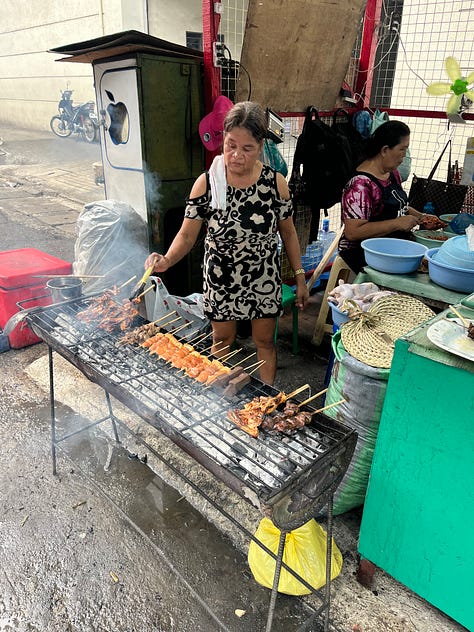

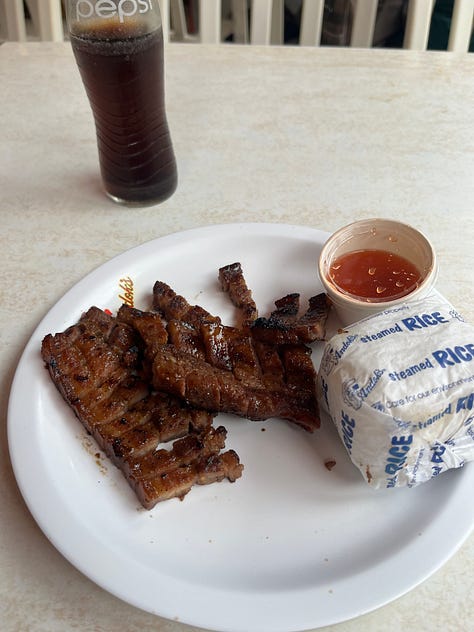
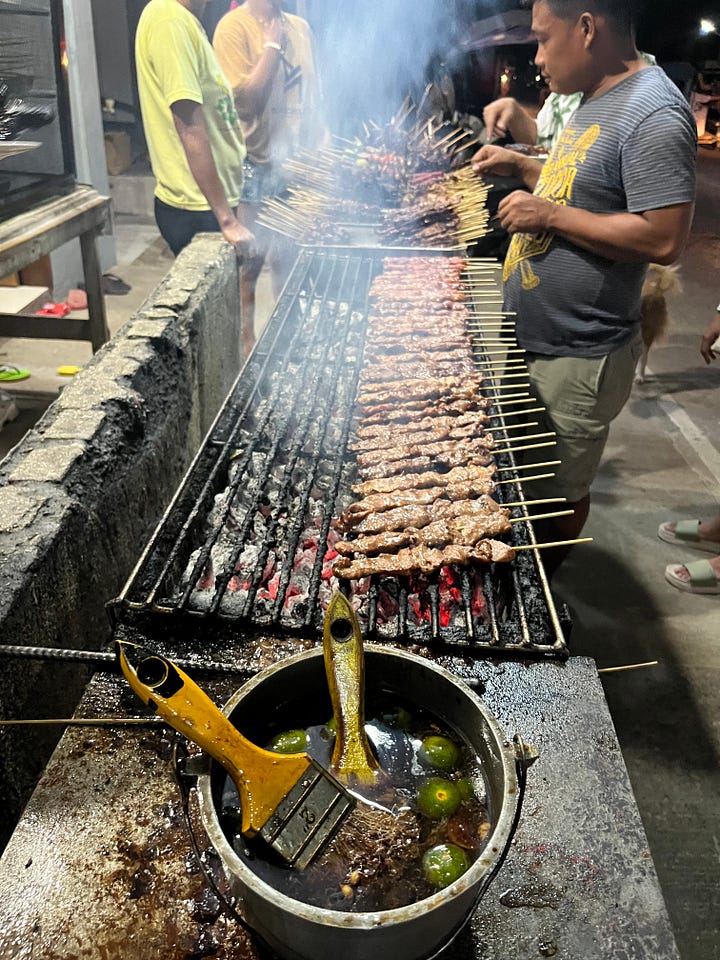

Beef Tapsilog: Unusual to find much beef in Philippino cooking, but this is a staple. Thinly sliced beef, typically marinated in a mixture of soy sauce, vinegar, garlic, sugar, and black pepper. Served with Garlic Fried Rice and a fried egg.
DRINK:
Philippino’s are intensely proud of their biggest brewer, San Miguel, and they have fair arguement. A very refreshing drop which comes in Lager, Light or a Pale Pilsner (my favourite). Red Horse is the other major beer sold. 6.9% abv, but actually very easy to drink. Things can escalate quickly. The massive “Litro’ bottles (~$3), also happen to fit snuggly in a Scooter’s seat compartment.
The national rum, Tanduay, is ridiculously cheap at ~$3 / 700ml bottle. Easy drinking, but expect a horrible hangover.
COST OF LIVING:
The direct contrast between Europe and Asia is stark. You just can’t beat the value you get in Asia with everything from Food to Accommodation, and Philippines is one of the best value.
A local meal, rice and large beer will set you back anywhere from $4-8.
Simple but clean accomodations start ~$20, Bungalows near the beach $50-70 per night. Just be aware that while accommodations in the Philippines are similar cost to other Asian countries, the countries infrastructure is lacking, which means that there will always be something wrong….aircon not coping, toilets block regularly, internet not working etc etc.
VISAS
Visa waiver for 90 days. But you must show a departing flight before they let you in the country.
MUST-HAVE APP:
Google Translate, Grab, Chat GTP, Google Maps.
QUICK FIRE CLOSING COMMENTS:
Filipino’s are my favourite people in Asia. The biggest complement I can give them is they are the most ‘Aussie’ of any of the cultures in Asia, in my opinion. Super hard working (why cruise ships are staffed mainly by Filipino’s), but also fun loving. Helps that they speak English as well. They work 6 days per week, with most earning the minimum wage of 450 pesos, or ~$11 / day.
Cebu City is little more than a stopover. A dirty city of homeless people passed out next to young well dressed girls taking their instagram selfies. However the downtown food scene was impressive, enhanced by the food tour I did. A few Spanish attractions, given this was the primary landing spot of Magellan, who began the conversion of the country to Christianity and marked the start of 300 years of Spanish rule. Magellan was killed here by rebels some years later.
Boracay was a massive surprise. A tourist island for wealthy Japanese, South Koreans and Filipino’s, the beauty of its beaches rival places like the Maldives. The kilometres of restaurants and shops along White Beach reminded me a lot of a mini Hawaii. Expensive for Asia, but still very cheap for Australians, it’s Westernised just enough for most people. No surf, but the Western side is famous for Windsurfing.

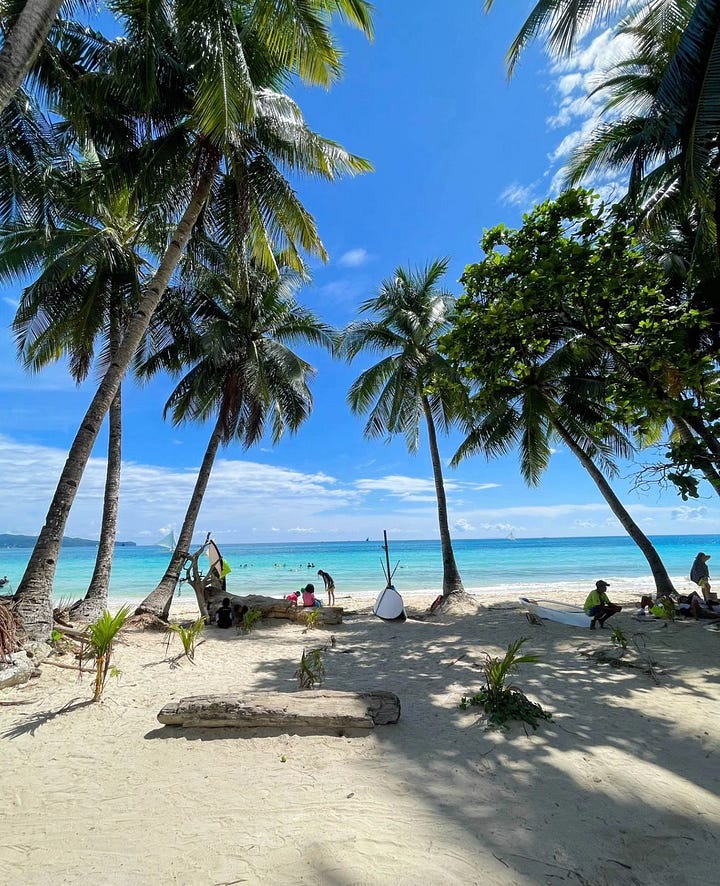

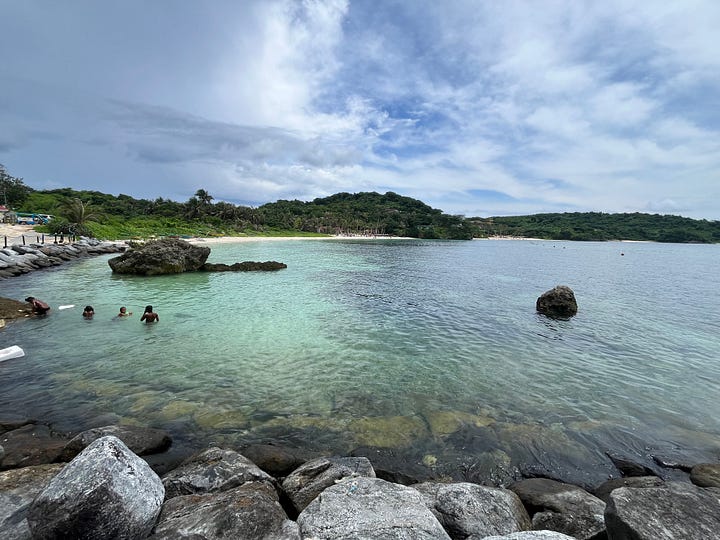
Siargao is what you would expect. Apparently ‘Commercialised’ by a couple of Aussie surfers 50 years ago who stumbled upon the breaks, it’s an island of shanty-towns (at least there’s a sports bar I could watch the State of Origin at), with the town of General Luna being the major drawcard, due to its famous Surf Breaks like Cloud 9 and Harana. A good smattering of Surf Camps, Beach Bungalows and hotels provide a lot of cheap options to stay close to the waves. Harana would be my pick, or Pacifico in the north. Pickup a scooter for ~$8 / day (no deposit / licence required), and get around the island.
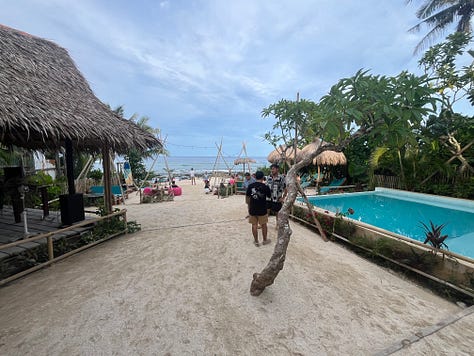
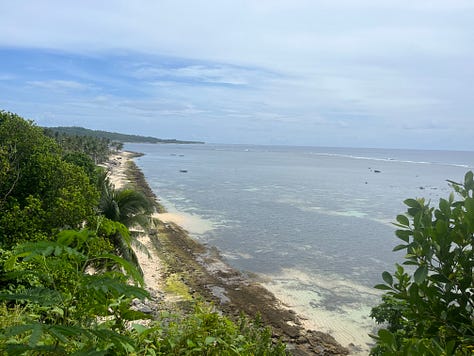
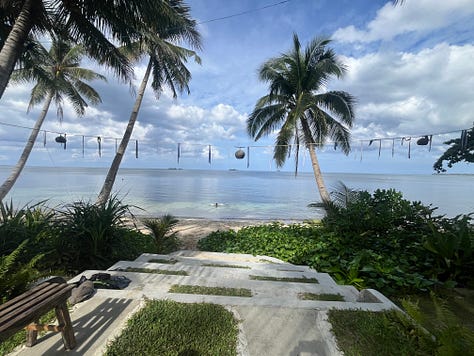
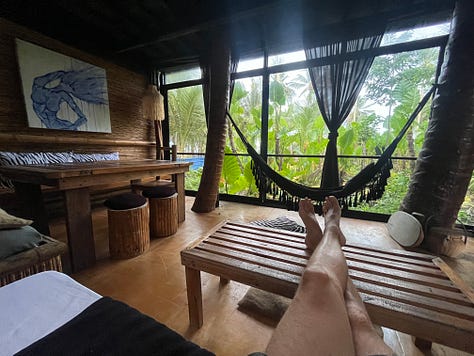
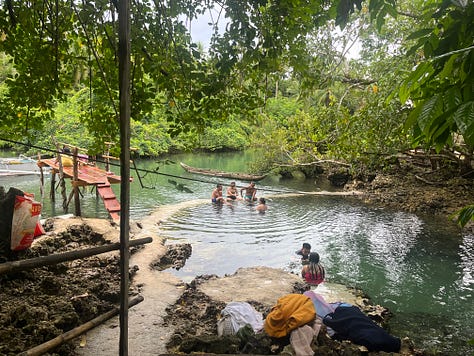
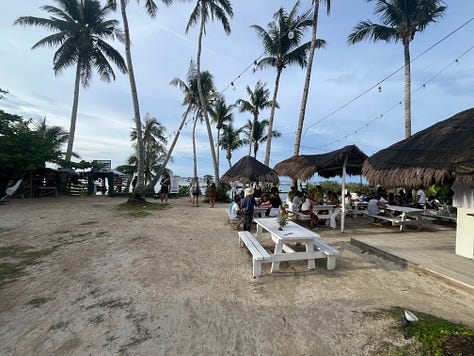
Siargao As with anywhere in Asia, make sure you find somewhere that has a FAN & AIRCONDITIONING. The Aircon is normally just shoved in a hole somewhere, so often in the heat doesn’t make a great deal of difference.
I usually judge how well I’ve picked a destination by the inverse of how many White Tourists populate the place. Through that lens I did well. Particularly in Cebu & Boracay I would say the ratio was about 10,000:1. Easy to tell as I towered above everyone else.
Keep cash on you at all times. This is one of the few places I’ve found that often still don’t accept credit cards, or particularly Tap and Go. Perhaps because of the regular power outages, cash is king.
Thailand is obviously known for the ‘lady-boys’ and prostitution, but there is quite a lot of that here as well. However I absolutely refuse to believe that the dozen or so ‘cat calls’ I received from the ladies on my trip were related to this…am sure they just knew a good thing when they saw it.
Keep an eye on the weather during July / August…this is Typhoon season. I had a great adventure with cancelled flights, hotel rooms and paying a Scooter rider $20 to break numerous laws and get me from one of Manila’s terminals to another for a connecting flight in under 5 minutes.
I headed to the Philippines as this was the only country is Asia that I haven’t spent a prolonged period in, and in a word, I would sum the country up as ‘Underrated”. Whether it’s absolute pristine beaches on Boracay or Palawan, or the surf beaches around islands like Siargao (granted the waves can’t compete with Indonesia), some great options for an inexpensive holiday. Looks like you can pickup non-stop tickets to Manila from Sydney for ~$400, which takes ~8hrs.
Cheers
Marto




